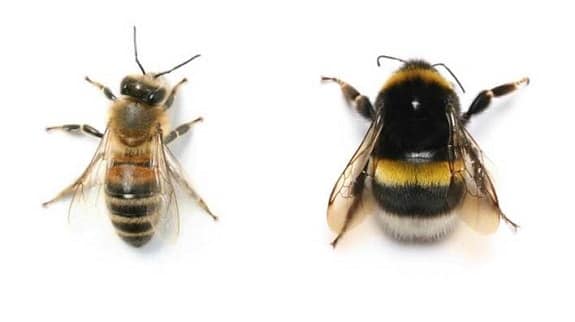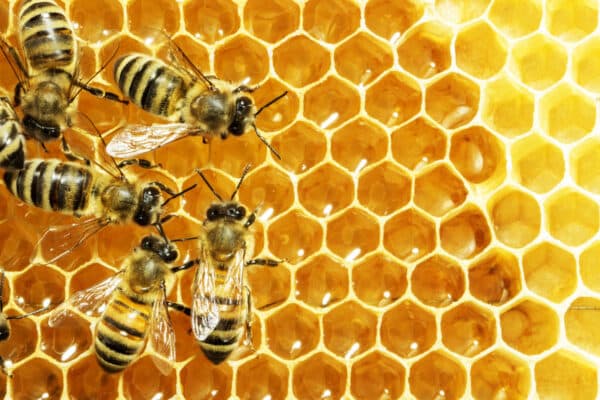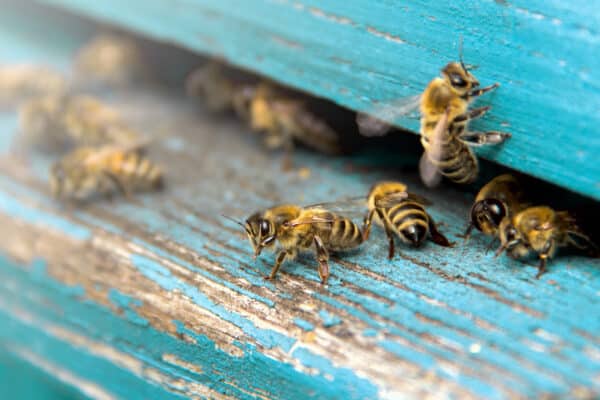
Bees have actually been much in the news of late, and for the saddest of reasons: due to environment loss, worldwide warming, pesticides, and mono-crop farming, their numbers are in sharp decline throughout the United States. Regardless of bumblebee vs honeybee, the loss of any bees and other threatened pollinators could harm not just the world’s economy, however also endanger its very ecosystem.
And although we can’t recognize with all of them, we can take the first step by considering 2 of the most typical varieties: the bumblebee and the honeybee. Let’s get the taxonomy out of the way initially. Although the various bumblebee and honeybee species both belong to the Apidae family, bumblebees belong to the Bombus genus and honeybees to Apis.
Bumblebees Vs. Honeybees: What’s The Difference
Bumblebees are round and fuzzy; honeybees are smaller sized and thinner it would be easy, in truth, to error them for wasps. And while honeybees have a clear distinction in between head and abdominal area, bumblebees are “all of one piece.” Honeybees also have 2 clear sets of wings: a bigger set in front and a smaller sized set in the back – bumblebee vs honeybee.
Hyper-social honeybees reside in hives with 10s of countless their brethren: those hives can either be domesticated nests kept by beekeepers or wild ones discovered in hollow trees. As their name suggests, they are honey producers, and their long-lived colonies survive the winter season intact the queen, in truth, can live for some 3 to four years.
Comparing Bumblebees With Honeybees
Where honeybees build hives, bumblebees reside in nests with up to a few hundred fellow bees. These nests are found specifically in the wild (bumblebees are not domesticated), and can typically be discovered in burrows or holes in the ground. In fact, the queen, which is the only member of a bumblebee colony to survive the winter season, hibernates in the ground.
Of the two groups, bumblebees are the better pollinators – bumblebee vs honeybee. The reason for this is incomparably useful: as there are more types of bumblebees, there is a wider variety in lengths of tongue and, therefore, the type of owers they feed on. They are quick workers and, due to the fact that of their bigger bodies, can carry larger loads.
And this higher exibility makes them adept at cross-pollination, which is particularly crucial for fruit trees. Additionally, bumblebees are more resistant to climate conditions such as cold, rain, and restricted light. The one benefit honeybees have is communication: they in fact carry out a dance to let their fellow employees know where excellent materials of pollen can be discovered! Although this benefits their nest and honey production, it can in fact be a drawback in regards to pollination.
One last difference: honeybees can only sting once before passing away. Bumblebees can sting numerous times, however, they do not form swarms like honeybees and they just sting when genuinely provoked. Both bee types are safe adequate to host in your yard, so take reasonable safety measures and don’t let the worry of stings prevent you from planting wildflowers to attract bees and reverse decades of environment loss. bumblebee vs honeybee.
Is It A Honeybee Or A Bumblebee?
It’s this time of year that honey bees are swarming and becoming more active due to the warmer weather and the brighter, longer days. Bumblebees have actually made nests in birdbox’s, sheds, compost bins, and roofing system spaces and are out gathering pollen and nectar. Wasps appear to delight in disturbing our charming picnics at parks! We get lots of messages about “swarms” in birdbox’s when really these are 99% of the time little bumblebee nests.
If you see this, please email us and let us know if you’re based in the Hull location and we can hopefully come out and gather the swarm for you. A honey bee swarm on a bird box. These are bumblebees. It holds true that lots of people think there’s just one kind of bee – the fuzzy round bumblebees we see on the flowers in our garden and typically the cartoon-like bees we see in kids’ books.
In fact, there are about 270 species of bees in overall. From honeybees to bumblebees, leaf-cutter bees, mason bees, mining bees, carpenter bees, sweat bees, and many many more. We have actually created a helpful bee-guide which reveals the distinctions in honeybees, bumblebees, and wasps.
It is essential that if you do have a bumblebee nest, to leave them be if they’re not causing an issue. If you have a honey bee nest or swarm, call your local wildlife removal expert.
Contact the experts at Covenant Wildlife now to help you remove your bees and relocate them safely if you need to have them off your property.




